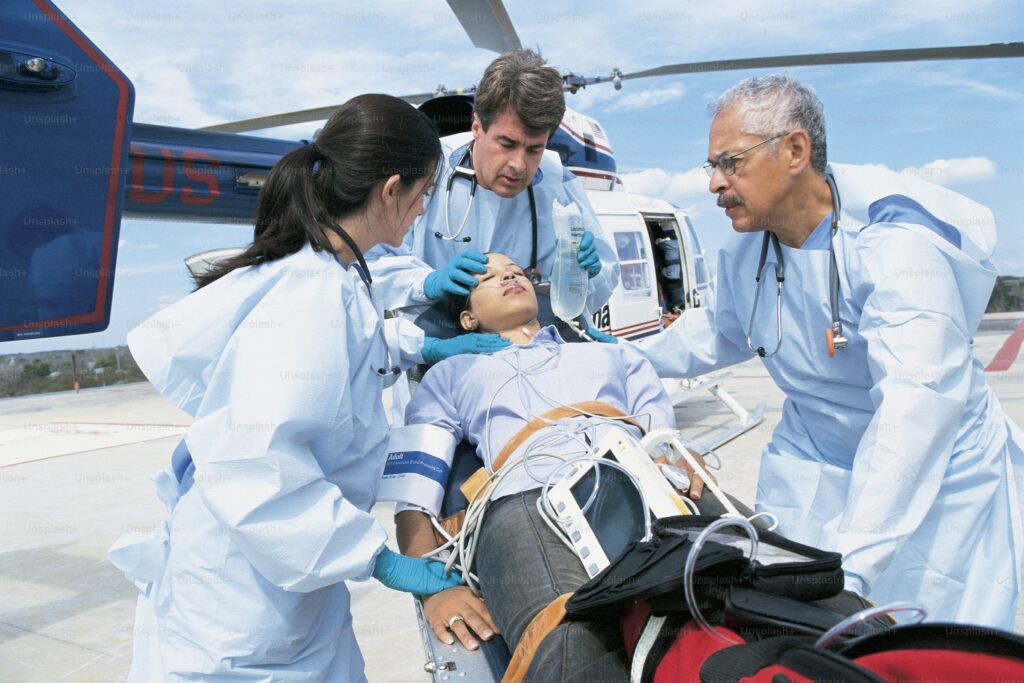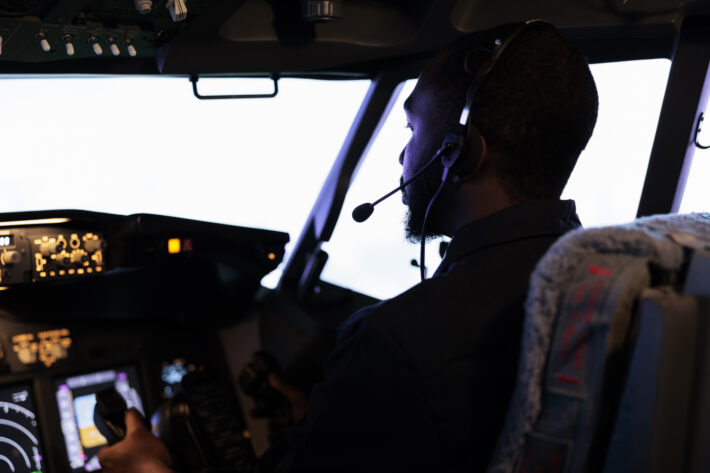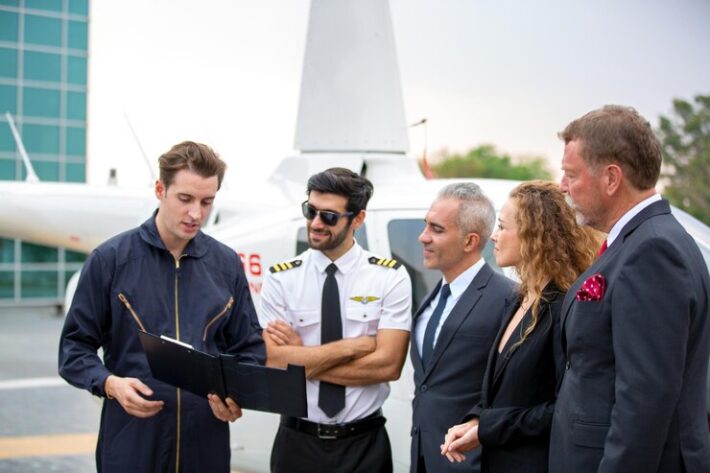Aviation Medical Certification: A Complete Guide for Pilots

Medical certification represents one of the most important—and sometimes challenging—aspects of a pilot’s career. This comprehensive guide explores the aviation medical certification process, requirements, common issues, and strategies for maintaining your medical certificate throughout your flying life.
Understanding Aviation Medical Certification
The aviation medical certification system is designed to ensure pilots meet the physical and mental health standards necessary for safe flight operations. According to the Federal Aviation Administration (FAA), approximately 350,000 aviation medical examinations are conducted annually in the United States.
“The aviation medical certification process isn’t about finding perfect health—it’s about ensuring pilots can safely perform their duties while maintaining reasonable access to the skies. Understanding the system helps pilots navigate it effectively and maintain their flying privileges throughout their aviation journey.” – Dr. Susan Reynolds, Senior Aviation Medical Examiner
The Three Classes of Medical Certificates
The FAA issues three classes of medical certificates, each with different requirements based on the type of flying privileges:
First-Class Medical Certificate
Required For:
- Airline Transport Pilot (ATP) exercising privileges
- Commercial pilots serving as pilot-in-command in Part 121 air carrier operations
Examination Frequency:
- Under age 40: Every 12 months
- Age 40 and over: Every 6 months
Unique Requirements:
- Electrocardiogram (EKG) at first examination after age 35, then annually after age 40
- Near vision acuity of 20/40 or better in each eye separately
- Intermediate vision acuity of 20/40 or better in each eye separately (age 50+)
- Distance vision acuity of 20/20 or better in each eye separately
- Normal color vision
- Hearing standards: Ability to hear an average conversational voice in a quiet room at 6 feet with back turned
Validity When Used for Lower Privileges:
- As a second-class medical: 12 months regardless of age
- As a third-class medical:
- Under age 40: 60 months
- Age 40 and over: 24 months
Second-Class Medical Certificate
Required For:
- Commercial pilot duties (except when requiring first-class)
- Flight engineer duties
- Flight navigator duties
- Air traffic control tower operator duties
Examination Frequency:
- All ages: Every 12 months
Unique Requirements:
- Near vision acuity of 20/40 or better in each eye separately
- Intermediate vision acuity of 20/40 or better in each eye separately (age 50+)
- Distance vision acuity of 20/20 or better in each eye separately
- Normal color vision
- Hearing standards: Same as first-class
Validity When Used for Lower Privileges:
- As a third-class medical:
- Under age 40: 60 months
- Age 40 and over: 24 months
Third-Class Medical Certificate
Required For:
- Private pilot duties
- Recreational pilot duties
- Student pilot duties
Examination Frequency:
- Under age 40: Every 60 months
- Age 40 and over: Every 24 months
Unique Requirements:
- Near vision acuity of 20/40 or better in each eye separately
- Distance vision acuity of 20/40 or better in each eye separately
- Ability to perceive those colors necessary for safe performance
- Hearing standards: Same as first-class but with slightly more flexibility
Alternative:
- BasicMed (discussed in detail below) may be used instead of a third-class medical for certain operations
The Medical Certification Process
Obtaining a medical certificate involves several steps:
Selecting an Aviation Medical Examiner (AME)
AME Qualifications:
- Physician designated by the FAA
- Specialized training in aviation medicine
- Authorized to perform FAA medical examinations
- Varying levels of experience with complex cases
Finding an AME:
- FAA AME Locator
- Recommendations from other pilots
- Aviation medical specialists for complex cases
- HIMS AMEs for substance abuse/dependence cases
Selection Considerations:
- Experience with pilots in your situation
- Comfort with discussing medical issues
- Reputation in the pilot community
- Willingness to advocate for pilots
- Understanding of special issuance processes
Preparing for Your Medical Examination
Documentation to Gather:
- Previous medical certificate (if applicable)
- List of all medications (prescription and over-the-counter)
- Dates of hospitalizations or surgeries
- Contact information for treating physicians
- Documentation for previously reported conditions
- Corrective lenses prescription (if applicable)
Pre-Examination Considerations:
- Adequate rest before examination
- Hydration (but not excessive for urinalysis)
- Avoiding caffeine before blood pressure check
- Fasting if blood work is anticipated
- Bringing required documentation
MedXPress Application:
- Required online application: FAA MedXPress
- Complete within 60 days of examination
- Honest disclosure of all medical conditions
- Confirmation number required for examination
- Review for accuracy before submission
The Medical Examination Process
Standard Examination Components:
- Review of medical history
- Vision testing (near, intermediate, distant)
- Color vision assessment
- Hearing evaluation
- Blood pressure and pulse measurement
- Urinalysis for glucose and protein
- Neurological assessment
- Mental health screening
- Physical examination of major body systems
Examination Outcomes:
- Issuance: Certificate issued immediately
- Deferral: Case referred to FAA for decision
- Denial: AME determines disqualification exists
- Special Issuance: Certificate issued with limitations
Post-Examination Process:
- Certificate issuance (if approved)
- FAA review of examination results
- Possible request for additional information
- Final determination by FAA in complex cases
Common Medical Certification Challenges
Several medical conditions frequently present challenges for pilots:
Vision and Eye Conditions
Refractive Errors:
- Correctable with glasses or contacts
- LASIK, PRK, and other surgeries generally acceptable after stability
- Monovision correction not acceptable for flying
- Required vision reports for significant changes
Color Vision Deficiency:
- Various testing methods available
- Operational color vision test as alternative
- Statement of Demonstrated Ability (SODA) possibility
- Class restrictions possible based on severity
Other Eye Conditions:
- Glaucoma: Generally acceptable with treatment and stability
- Cataracts: Acceptable with adequate vision
- Retinal detachment: Special issuance after successful treatment
- Keratoconus: Individual evaluation based on stability
Cardiovascular Conditions
Hypertension (High Blood Pressure):
- Maximum allowed: Generally 155/95 without medication
- Acceptable medications with stable control
- Documentation requirements for medication use
- Six-month observation period for new medications
Coronary Artery Disease:
- Special issuance possible after stabilization
- Comprehensive cardiovascular evaluation required
- Stress testing and cardiac catheterization often needed
- Regular follow-up testing required for renewal
Arrhythmias:
- Atrial fibrillation: Special issuance with control
- Heart block: Evaluation based on type and symptoms
- Pacemakers: Special issuance possible with restrictions
- Implantable defibrillators: Generally disqualifying
Metabolic and Endocrine Conditions
Diabetes:
- Non-insulin treated: Generally acceptable with stability
- Insulin-treated: Special issuance possible with strict protocols
- Continuous glucose monitoring often required
- Regular reporting of blood sugar control
Thyroid Disorders:
- Hypothyroidism: Acceptable with stable treatment
- Hyperthyroidism: Special issuance after stabilization
- Documentation of normal thyroid function
- Monitoring for medication side effects
Other Endocrine Conditions:
- Adrenal disorders: Individual evaluation
- Pituitary disorders: Special issuance possible
- Parathyroid conditions: Evaluation based on stability
- Metabolic syndrome: Management of individual components
Neurological Conditions
Headaches and Migraines:
- Evaluation based on frequency, severity, and treatment
- Acceptable with appropriate control and minimal medication
- Documentation of triggers and warning signs
- Possible operational restrictions
Seizure Disorders:
- Generally disqualifying with exceptions
- Possible certification after seizure-free period
- Childhood seizures with resolution may be acceptable
- Medication considerations and side effects
Other Neurological Issues:
- Stroke/TIA: Special issuance possible after recovery
- Multiple sclerosis: Individual evaluation based on symptoms
- Parkinson’s disease: Special issuance with minimal symptoms
- Traumatic brain injury: Evaluation based on recovery
Mental Health Conditions
Depression:
- Special issuance possible with specific SSRI medications
- Comprehensive SSRI protocol requirements
- Stability period before consideration
- Regular psychiatric monitoring required
Anxiety Disorders:
- Evaluation based on severity and treatment
- Acceptable with minimal or no medication
- Situational anxiety vs. chronic condition distinction
- Cognitive behavioral therapy documentation helpful
Attention Deficit Disorder:
- Evaluation based on severity and treatment
- Some medications disqualifying, others acceptable
- Neuropsychological testing often required
- Demonstration of adequate function without medication helpful
Substance Abuse and Dependence
Alcohol-Related Issues:
- HIMS program for recovery monitoring
- Minimum sobriety period required
- Comprehensive evaluation and testing
- Regular monitoring for certification maintenance
Drug-Related Issues:
- Similar process to alcohol through HIMS
- Substance-specific considerations
- Zero tolerance for illicit drug use
- Prescription medication misuse concerns
Smoking and Nicotine:
- Not directly disqualifying
- Associated health conditions may be issues
- Consideration in overall health assessment
- Smoking cessation encouraged but not required
Special Issuance and Authorization Processes
When standard certification isn’t possible, special processes may allow continued flying:
Special Issuance Medical Certificates
Process Overview:
- Initial denial or deferral of regular certificate
- Submission of additional medical documentation
- FAA review and determination
- Issuance with specific limitations or requirements
Common Requirements:
- Regular status reports from treating physicians
- Periodic specialized testing
- Medication stability periods
- Demonstration of condition stability
- Follow-up examinations at specified intervals
Management Strategies:
- Working with an experienced AME
- Maintaining complete medical records
- Following treatment plans precisely
- Preparing comprehensive documentation
- Understanding timeline expectations
Statement of Demonstrated Ability (SODA)
Purpose and Application:
- For static defects unlikely to change
- Primarily used for vision and hearing deficiencies
- Demonstrates ability to perform despite deficiency
- Remains valid unless underlying condition worsens
Obtaining a SODA:
- Medical flight test with FAA representative
- Practical demonstration of capability
- Documentation of compensatory techniques
- Permanent authorization once issued
Limitations and Considerations:
- May include operational restrictions
- Specific to the demonstrated deficiency
- Not applicable to progressive conditions
- Must be carried with medical certificate
Authorization for Special Issuance (SI)
Process Details:
- Issued for conditions requiring ongoing monitoring
- Time-limited authorization requiring renewal
- Specific testing and documentation requirements
- May include operational limitations
Common Conditions for SI:
- Cardiovascular disease
- Diabetes requiring medication
- Certain neurological conditions
- Mental health conditions on approved medications
- History of substance abuse/dependence
Renewal Considerations:
- Advance preparation for required testing
- Maintaining relationship with specialists
- Calendar management for timely submission
- Understanding changing requirements
BasicMed: An Alternative to Third-Class Medical
The BasicMed program offers an alternative pathway for many private pilots:
BasicMed Eligibility and Limitations
Eligibility Requirements:
- Previously held valid medical certificate after July 14, 2006
- Most recent medical not denied, suspended, or revoked
- Valid U.S. driver’s license
- Medical examination by state-licensed physician
- Completion of online medical education course
Operational Limitations:
- Aircraft under 6,000 pounds maximum certificated takeoff weight
- Six or fewer passenger seats
- Operating under VFR or IFR at altitudes up to 18,000 feet MSL
- Speeds not exceeding 250 knots indicated airspeed
- Flights within United States (with exceptions)
- Non-commercial operations only
Pilot Limitations:
- Cannot operate for compensation or hire
- Cannot operate with more than 5 passengers
- Cannot conduct flight operations outside the United States without foreign authority acceptance
BasicMed Compliance Requirements
Medical Education:
- FAA-approved online medical course every 24 months
- AOPA Medical Self-Assessment Course
- Mayo Clinic BasicMed Course
- Course completion certificate retention
Physical Examination:
- Comprehensive physical exam every 48 months
- Conducted by any state-licensed physician
- Completion of FAA Comprehensive Medical Examination Checklist
- Physician awareness of pilot’s duties
- Retention of signed checklist
Documentation Requirements:
- Course completion certificate
- Signed medical examination checklist
- Valid U.S. driver’s license
- Records retained by pilot (not submitted to FAA)
- Available for inspection if requested
BasicMed vs. Third-Class Medical
Advantages of BasicMed:
- More physician options for examination
- Less stringent standards for some conditions
- No FAA involvement in routine certification
- Potentially lower costs
- Less anxiety about medical denial
Disadvantages of BasicMed:
- Operational limitations
- Geographic restrictions
- Not recognized by all foreign countries
- Not valid for commercial operations
- Some physicians reluctant to participate
Decision Factors:
- Type of flying conducted
- International flight needs
- Aircraft typically flown
- Existing medical conditions
- Future aviation goals
Strategies for Long-Term Medical Certification
Maintaining medical certification throughout your flying career requires proactive management:
Preventive Health Practices
Physical Health Maintenance:
- Regular exercise appropriate for age and condition
- Healthy diet and weight management
- Blood pressure and cholesterol monitoring
- Regular non-AME physician check-ups
- Preventive screenings as recommended
Mental Health Considerations:
- Stress management techniques
- Adequate sleep and rest
- Work-life balance maintenance
- Social connection and support
- Professional help when needed
Lifestyle Choices:
- Moderate or no alcohol consumption
- No smoking or tobacco use
- Avoiding recreational drugs
- Caffeine moderation
- Adequate hydration
Medication Management
FAA Medication Considerations:
- Understanding prohibited medications
- Consulting FAA Medication Database
- Waiting periods after medication discontinuation
- Alternative treatment exploration
- Documentation of medication stability
Working with Healthcare Providers:
- Informing all providers of pilot status
- Discussing medication alternatives
- Requesting minimum effective dosages
- Scheduling medication changes between flights
- Documenting all discussions and decisions
Self-Monitoring Practices:
- Tracking medication effects and side effects
- Noting any performance impacts
- Maintaining detailed medication logs
- Understanding interaction effects
- Grounding when appropriate
Condition Management and Reporting
Ongoing Condition Monitoring:
- Regular specialist follow-up
- Compliance with treatment plans
- Documentation of stability
- Understanding progression indicators
- Preparation for AME discussions
FAA Reporting Requirements:
- New diagnosis reporting
- Medication changes
- Hospital admissions
- Surgical procedures
- Vision changes
Strategic Disclosure Timing:
- Understanding 60-day rule for MedXPress
- Coordination with AME before reporting
- Documentation preparation before disclosure
- Specialist reports before AME visit
- Consideration of certification cycle timing
Working with Aviation Medical Examiners
Building an Effective Relationship:
- Selecting an experienced, pilot-friendly AME
- Maintaining consistent AME relationship
- Open communication about concerns
- Advance discussion of new issues
- Appreciation for their advocacy role
Pre-Examination Consultation:
- Discussion of new conditions before official visit
- Strategy development for complex issues
- Documentation review and organization
- Understanding of likely outcomes
- Preparation for possible deferral
Between-Examination Communication:
- Updates on significant health changes
- Questions about new medications
- Guidance on documentation needs
- Preparation for next certification cycle
- Advice on specialist selection
Special Consideration for Aging Pilots
As pilots age, medical certification often requires additional attention:
Age-Related Certification Changes
Regulatory Changes:
- Increased frequency of examinations
- Additional testing requirements
- More scrutiny of certain conditions
- Cognitive assessment considerations
- Vision and hearing focus
Common Age-Related Concerns:
- Cardiovascular disease risk increase
- Medication usage typically increases
- Cognitive function assessment
- Sensory acuity changes
- Recovery time from medical events
Proactive Management:
- Earlier preparation for examinations
- More comprehensive documentation
- Consideration of BasicMed transition
- Realistic assessment of capabilities
- Potential operational limitations
Cognitive Health and Assessment
Cognitive Considerations:
- Normal age-related changes vs. impairment
- Importance of mental exercise and stimulation
- Social engagement benefits
- Learning new skills for brain health
- Physical exercise impact on cognitive function
Self-Assessment Strategies:
- Honest evaluation of performance
- Feedback solicitation from instructors/peers
- Simulator performance monitoring
- Complex task management assessment
- Recognition of changing capabilities
Professional Assessment Options:
- Neuropsychological testing
- Cognitive screening tools
- Aviation-specific cognitive assessment
- ICAO cognitive assessment protocols
- Preventive evaluation before problems arise
Transitioning Medical Certification Strategies
Strategic Planning:
- Long-term certification pathway planning
- Consideration of future flying goals
- Realistic assessment of medical trajectory
- BasicMed transition timing
- Sport pilot privileges as alternative
Documentation Strategies:
- Lifetime medical record organization
- Digital record maintenance
- Specialist relationship development
- Condition stability documentation
- Treatment compliance evidence
Operational Adjustments:
- Flying currency maintenance
- Skill-appropriate flight activities
- Two-pilot operations consideration
- Time-of-day limitations self-imposed
- Weather minimums adjustment
Navigating Medical Certificate Denials
When certification challenges arise, several options exist:
Understanding Denial and Deferral
Types of Certification Actions:
- Denial: AME determines disqualification exists
- Deferral: AME refers decision to FAA
- Administrative denial: FAA action after review
- Special issuance denial: Failure to meet SI requirements
Immediate Response Steps:
- Request written explanation of decision
- Obtain copies of all submitted documentation
- Understand appeal timeframes
- Consider consultation with aviation medical specialist
- Evaluate alternative certification pathways
Emotional Management:
- Recognizing normal reactions to denial
- Maintaining perspective on options
- Seeking support from pilot community
- Focusing on constructive next steps
- Avoiding hasty decisions or actions
Appeal and Reconsideration Processes
FAA Appeal Process:
- Request for reconsideration to Regional Flight Surgeon
- Appeal to Federal Air Surgeon
- National Transportation Safety Board appeal
- Federal court review if necessary
Documentation for Appeals:
- New or clarifying medical information
- Specialist evaluations and opinions
- Evidence of condition stability or improvement
- Comparable case precedents
- Demonstrated ability to perform safely
Professional Assistance:
- Consultation with aviation medical specialists
- AOPA or EAA medical services
- Aviation medical attorneys
- AMEs experienced with appeals
- Pilot advocacy organizations
Alternative Certification Pathways
BasicMed Consideration:
- Eligibility assessment
- Understanding operational limitations
- Physician relationship development
- Required documentation preparation
- Online course completion
Sport Pilot Options:
- No medical certificate required
- Valid driver’s license requirement
- Self-assessment responsibility
- Aircraft and operational limitations
- Previous medical denial considerations
Medical Certification in Other Countries:
- Different standards in various jurisdictions
- Potential for certification under foreign authority
- Residency and licensing requirements
- Reciprocity considerations
- Practical limitations of foreign certification
The Future of Aviation Medical Certification
The aviation medical certification system continues to evolve:
Evolving Medical Standards
Recent Changes:
- BasicMed implementation
- Special issuance policy liberalization
- SSRI medication acceptance
- Insulin-treated diabetes protocol development
- Sleep apnea policy refinement
Potential Future Developments:
- Cognitive assessment standardization
- Additional medication acceptances
- Further alternative certification pathways
- Technology integration for monitoring
- Risk-based certification approaches
Advocacy and Input Opportunities:
- AOPA and EAA medical advocacy
- Public comment on proposed changes
- Participation in research studies
- Sharing experiences with policy makers
- Supporting evidence-based policy development
Technology and Medical Monitoring
Emerging Technologies:
- Continuous glucose monitoring integration
- Remote physiological monitoring
- Cognitive assessment tools
- Performance monitoring systems
- Predictive health analytics
Potential Certification Impacts:
- Real-time health data consideration
- Reduced examination frequency with monitoring
- More personalized certification decisions
- Earlier intervention for developing issues
- Enhanced safety through continuous assessment
Privacy and Implementation Concerns:
- Data security and ownership questions
- Appropriate use limitations
- Cost and accessibility factors
- Integration with existing systems
- Pilot acceptance and compliance
International Harmonization Efforts
Current Differences:
- Varying standards between countries
- Different medication acceptances
- Age limitation variations
- Special issuance process differences
- Alternative certification options
Harmonization Initiatives:
- ICAO standards development
- Bilateral agreements between authorities
- Medical certificate recognition efforts
- Shared research and data analysis
- Common risk assessment frameworks
Practical Implications:
- Potential for broader certification recognition
- Simplified international operations
- More consistent standards globally
- Shared medical knowledge application
- Enhanced safety through best practices
Conclusion: A Proactive Approach to Medical Certification
Aviation medical certification represents a critical component of flight safety, ensuring pilots maintain the health standards necessary for safe operation. While the process can sometimes seem complex or challenging, understanding the system and taking a proactive approach can help pilots maintain their certification throughout their flying careers.
The most successful approach combines preventive health practices, open communication with healthcare providers and AMEs, thorough documentation, and strategic planning. By viewing medical certification as an ongoing process rather than a periodic hurdle, pilots can often prevent or minimize certification challenges before they arise.
Remember that the goal of aviation medical certification isn’t perfect health—it’s ensuring pilots can safely perform their duties while maintaining reasonable access to the skies. With proper preparation, education, and health management, most pilots can maintain their medical certification for many years of safe and enjoyable flying.
Have you faced challenges with your aviation medical certification? Share your experiences and questions in the comments below!
Looking to connect with pilots who have navigated similar medical certification issues? Join PilotPair today to build relationships with pilots who can share their experiences and advice.




